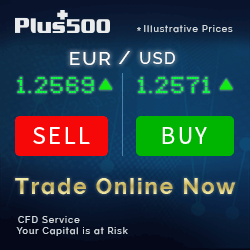 Trading Contract For Difference (CFD) financial instruments uses the same tactics and strategies that a trader employs when trading stocks, bonds, options, mutual funds, indexes, futures contracts and Forex.
Trading Contract For Difference (CFD) financial instruments uses the same tactics and strategies that a trader employs when trading stocks, bonds, options, mutual funds, indexes, futures contracts and Forex.
CFDs differ from futures and options in the regard that the contracts do not have an expiration date, so they do not experience the lack of liquidity that a futures or options contracts frequently encounter when they approach that expiration date.
Traders who favor a buy and hold, long term approach to investing are called trend traders, while those on the other end of the spectrum, who may hold an investment for mere seconds or minutes are known as scalpers and day traders, but in between lies an investment strategy where the time frame involved is generally longer than a day, but considerably less than the trend following strategy.
This is known as swing trading and is one of the well-known CFD trading strategies used.
The basis of the swing trading strategy is the fact that investment instrument prices and CFDs definitely conform to this reality: they never increase, decrease, or go sideways in a perfectly linear fashion. A CFD trader will frequently observe, during periods of sideways price activity, that a price channel will form where the chosen CFD has long periods of time where prices cannot exceed a certain level, but can’t go down below a certain level, either. This scenario presents the ideal opportunity for utilizing a swing trading strategy.
The tactics involved are quite simple. When prices either approach or are at the top of the channel, the CFD is sold. When prices approach or reach the bottom of the channel, it is bought. The advantage of swing trading comes into play where it is readily apparent that prices have broken out of the channel, meaning that the swing trading strategy has failed, but the trade can be exited before major losses are sustained.
Another advantage is the ability swing trading presents of making profits when trend following traders are on the sidelines waiting for a new trend to develop. Assuming that trade equity is sufficient, the size of the trade can be larger, since volatility is typically lower and prices move slower and wild and erratic swings are not as pronounced as they can be during a trend.
One of the nicest aspects of swing trading is that the top or the bottom of the channel does not need to be picked perfectly in order for profits to be made. In fact, many swing traders will sell a little before prices reach the top of the channel and buy prior to them reaching the bottom. In this scenario, they may experience a small drawdown, in which case they will add to, or defend a losing trade, if they are confident in the price channel holding.
One major disadvantage to trading CFDs with the swing trading method is that prices will occasionally break out of the channel, creating the appearance of a new trend forming, causing swing traders to abandon the trade for a loss, only to see prices return to the channel. In trading jargon, this is referred to as false breakout or a head fake, which is a very frustrating experience.
Another disadvantage occurs when the trader, thinking that a breakout is a false one, holds on to a position that is in fact a new trend and suffers a substantial loss.
Certain CFDs lend themselves better to a swing trading strategy than others. Contracts that are heavily traded, that is, have a large number of participants who are equally divided between those that are bullish and those that are bearish on prices, present a better opportunity of forming a sideways channel than do those that are more lightly traded and more prone to bears or bulls gaining control and causing prices to trend rapidly.
Prudent money management is required by the swing trading strategy. Price channels must be analyzed to determine the degree of risk they present. If the amount of money involved between the top and bottom of a channel is so great as to represent a large percentage of a trader’s risk capital, that particular CFD market should either be entirely avoided or observed until the channel shrinks to an acceptable degree. CFD Broker wants to see traders succeed so we tend to lean to the moderate side of money management. One conservative rule of thumb is to avoid a channel where the difference between the top and bottom exceeds 2% of available trading equity. This helps to ensure that any losses sustained are not completely damaging to your CFD trading account.



